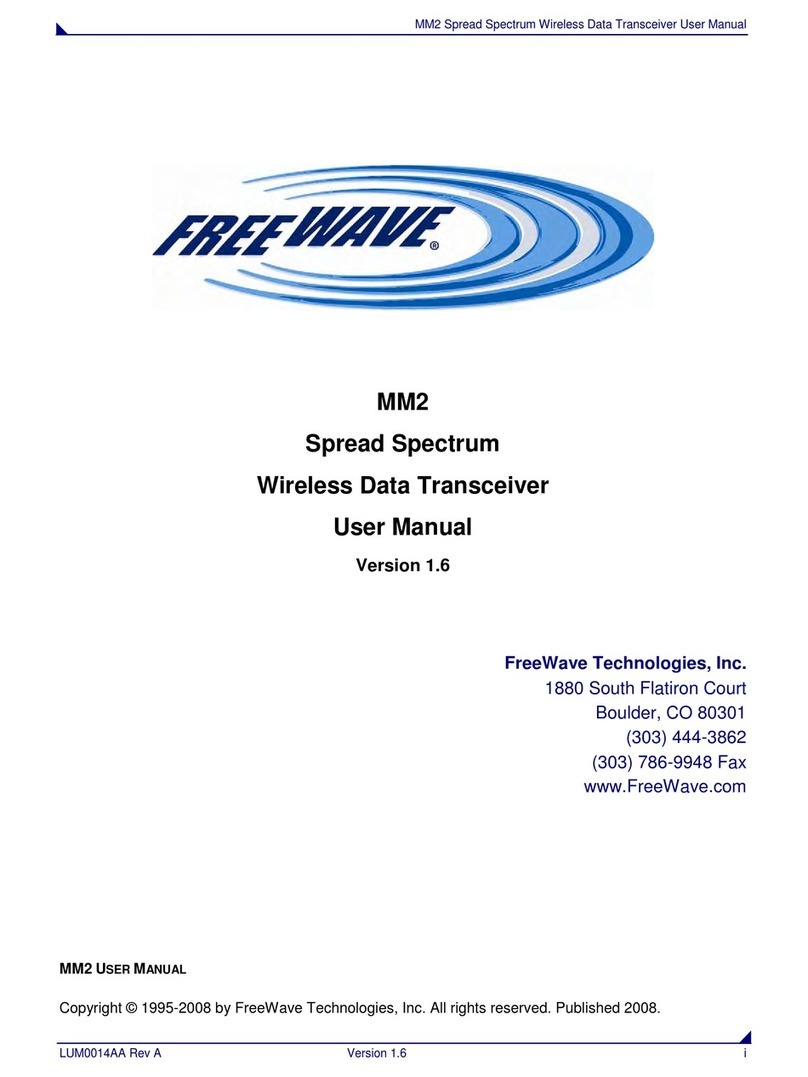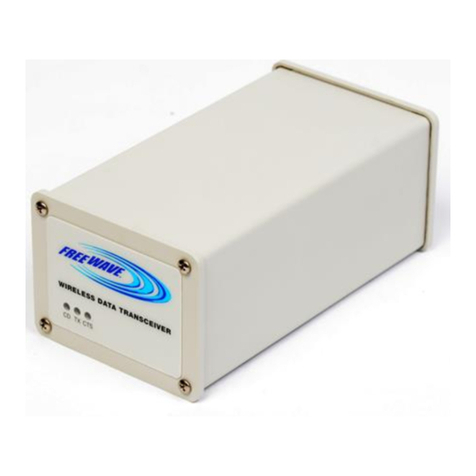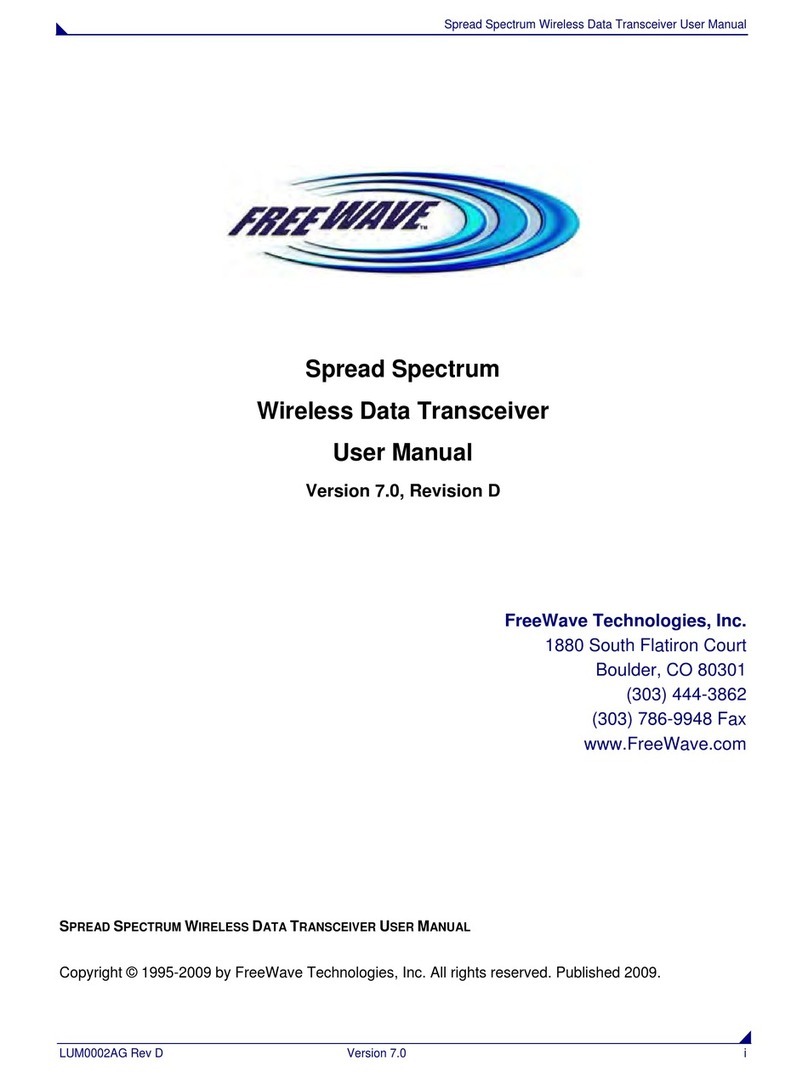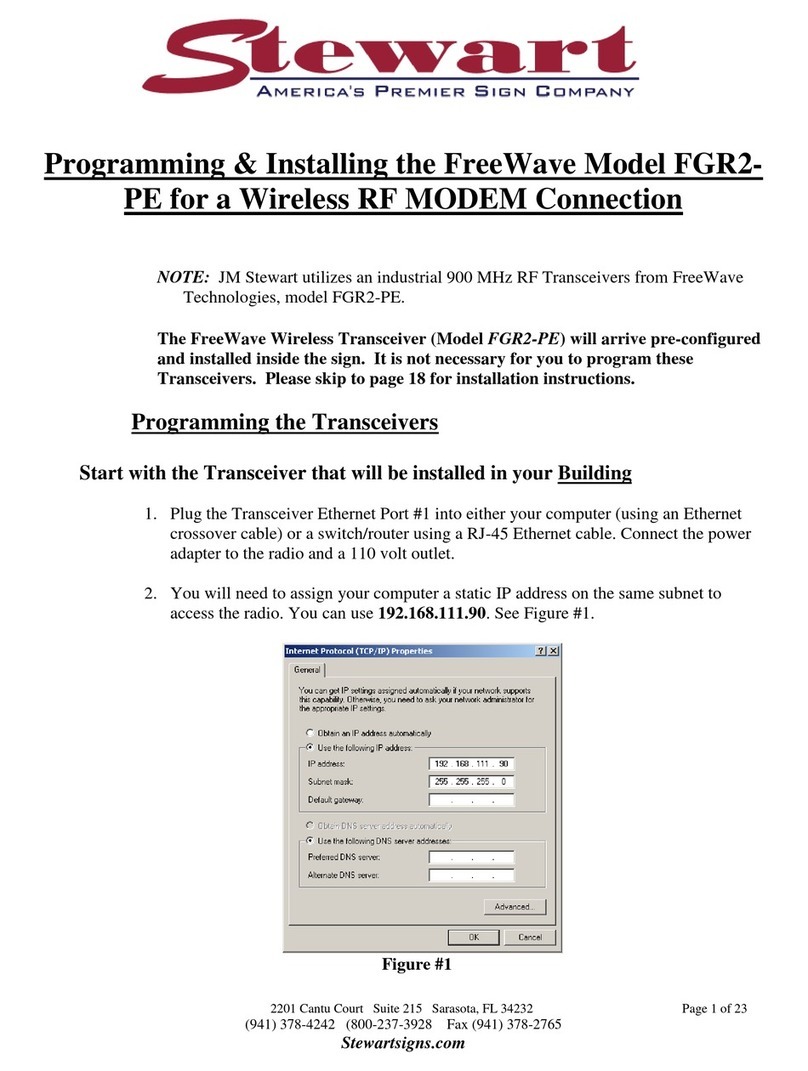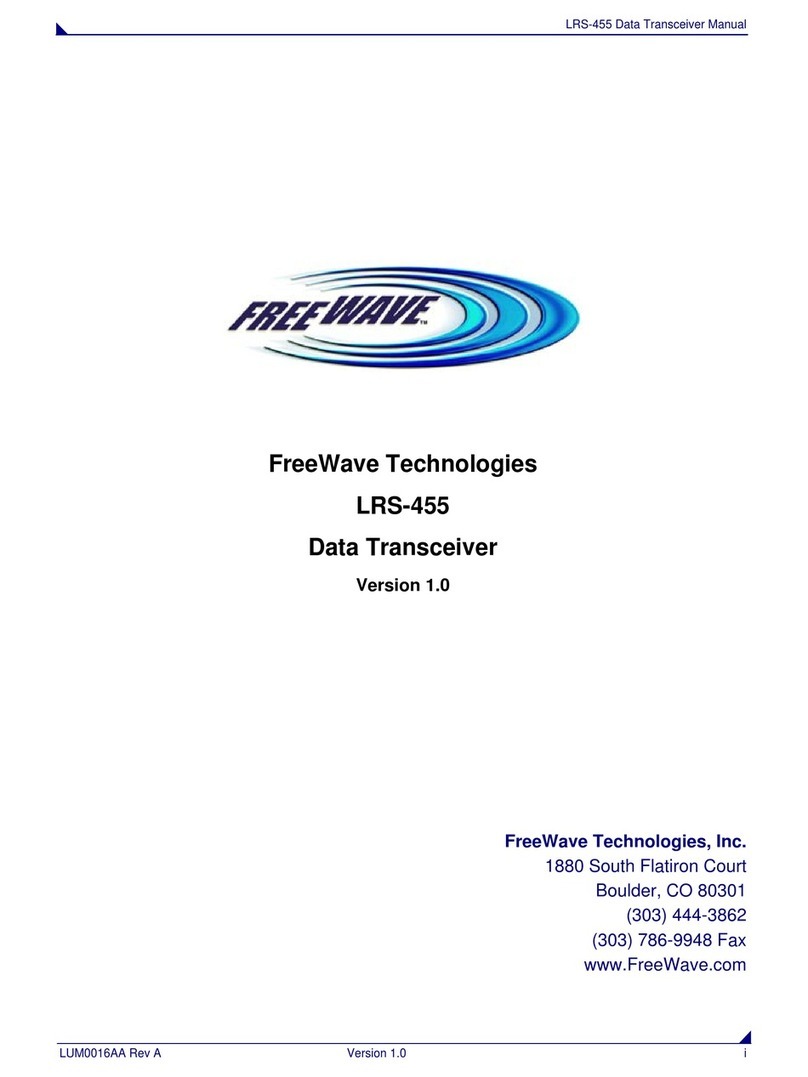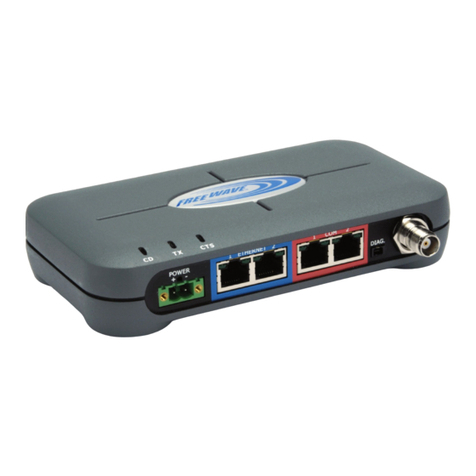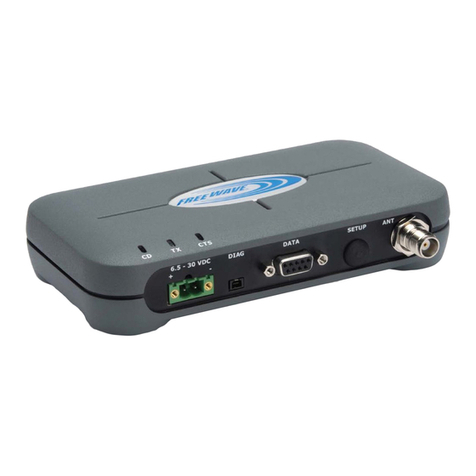
LRS-455-EU Data Transceiver Users Manual
LUM0032AA Rev A Version 1.0 vi
Table of Contents
ABOUT FREEWAVE TRANSCEIVERS.................................................................................................................1
CHOOSING A LOCATION FOR THE TRANSCEIVERS....................................................................................1
CHOOSING POINT-TO-POINT OR POINT-TO-MULTIPOINT OPERATION ........................................................................1
CHOOSING POINT-TO-POINT OR POINT-TO-MULTIPOINT OPERATION ........................................................................2
QUICK START ON A POINT-TO-MULTIPOINT NETWORK ..........................................................................3
POINT-TO-MULTIPOINT OPERATION LEDS. ...............................................................................................................3
QUICK START ON A POINT-TO-POINT NETWORK........................................................................................4
POINT-TO-POINT OPERATION LEDS...........................................................................................................................4
SETTING UP A TRANSCEIVER .............................................................................................................................5
OPERATION MODE......................................................................................................................................................5
BAUD RATE................................................................................................................................................................7
MODBUS RTU TIMING ...............................................................................................................................................9
CALL BOOK..............................................................................................................................................................11
RADIO TRANSMISSION CHARACTERISTICS ...............................................................................................................12
EDIT RADIO TRANSMISSION CHARACTERISTICS.......................................................................................................12
Setting Xmit and Rcv Frequencies.......................................................................................................................12
(1) and (2) Max Packet Size and Min Packet Size...............................................................................................12
(3) Xmit Rate........................................................................................................................................................13
(4) RF Data Rate .................................................................................................................................................13
(5)RF Xmit Power................................................................................................................................................14
(6) Slave Security.................................................................................................................................................14
(7) RTS to CTS.....................................................................................................................................................14
(8) Retry Time Out...............................................................................................................................................15
(9) Lowpower Mode.............................................................................................................................................15
(A) High Noise.....................................................................................................................................................16
(C) Remote LED ..................................................................................................................................................16
MULTIPOINT PARAMETERS ......................................................................................................................................17
EDIT MULTIPOINT PARAMETERS..............................................................................................................................17
(0) Repeaters........................................................................................................................................................17
(1) Master Packet Repeat ....................................................................................................................................17
(2) Max Slave Retry.............................................................................................................................................18
(3) Retry Odds .....................................................................................................................................................18
(4) DTR Connect..................................................................................................................................................18
(6) Network ID.....................................................................................................................................................18
(8) MultiMaster Sync...........................................................................................................................................18
(9) 1 PPS Enable/Delay.......................................................................................................................................18
(A) Slave/Repeater...............................................................................................................................................19
(B) Diagnostics....................................................................................................................................................19
(C) Subnet ID.......................................................................................................................................................19
(D) Radio ID........................................................................................................................................................20
(E) Local Access..................................................................................................................................................20
(G) Radio Name...................................................................................................................................................20
RADIO INFORMATION ...............................................................................................................................................21
Number of Disconnects........................................................................................................................................21
Antenna Reflected Power.....................................................................................................................................21
Average Noise Level............................................................................................................................................21
Average Signal Level...........................................................................................................................................22
Overall Rcv Rate (%)...........................................................................................................................................22
Radio Temperature..............................................................................................................................................22
